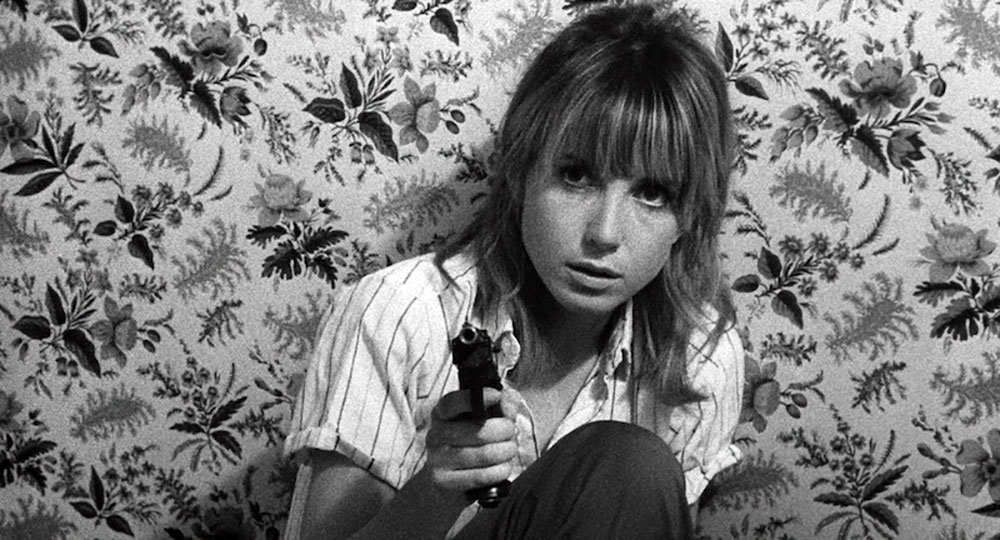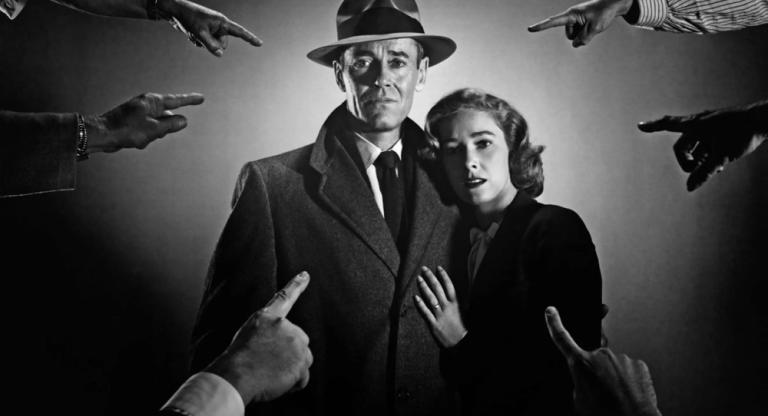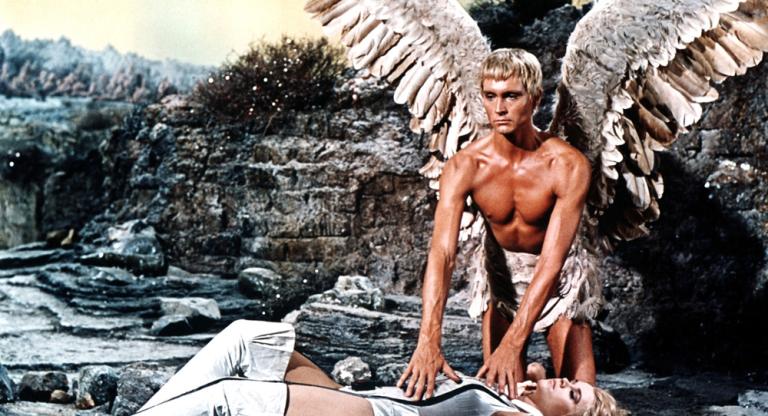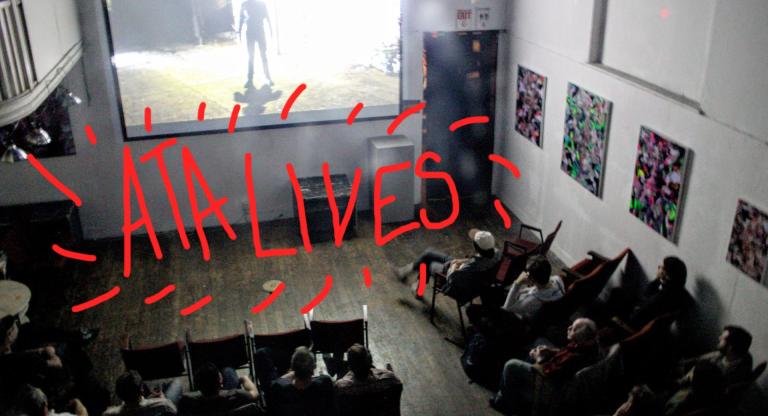With student demonstrators for Gaza awakening the ghosts of 1968 across the country, it’s fitting that the Museum of Modern Art has chosen the month of May for its tribute to Bulle Ogier. Best known for her extensive collaboration with the anarchic nouvelle vague magus Jacques Rivette, Ogier’s buoyancy, flexibility, and commitment to the formal independence of her acting craft embodies that most enigmatic (and for Americans, only dimly translatable) dimension of the cinematic legacy of May ‘68. As a survey, this diverse and frequently rare program of twenty-eight features and six shorts casts an overdue limelight on a performer sometimes outshone, for her eclecticism and subtlety, by the other large personalities in her midst both in front of and behind the camera.
Ogier’s path to the screen began in the experimental troupe of theater director Marc-Gilbert Guillaumin (Marc’O), whose raucous and kinetic Les bargasses (1965) garnered the attention of the Cahiers group when Jean Eustache edited a short documenting the production. In the ‘50s, an affiliation with Lettrism had led Marc’O to secure the appearance of Isidore Issou’s Venom and Eternity at the 1951 Cannes Film Festival. His own feature, Les Idoles (1968), douses the confections of the French yé-yé explosion in an acid bath of media satire that would resonate with the Situationist slogans coating the walls above the barricades that May. Ogier plays Gigi La Folle, one grinning bad-girl third—alongside Jean-Pierre Kalfon and Pierre Clémenti—of the haplessly stage-managed titular ensemble, a kind of Monkees for the Left Bank set.
Marc’O’s performers staged convulsions against a particularly French form of postwar consumerism, alternately anesthetized and arch—Debord’s society of the spectacle in motion. Rivette, for his part, was more taken with the convulsions themselves. The tempered promise of his first two features found the latest-blooming of the original Cahiers set in search of an idiom of his own. In this troupe’s spontaneity and ambiguity, its mind-body acrobatics, and outward-spilling social relations, Rivette found an allegory for reality itself. Thus, what transmits between Ogier and Kalfon in L’amour fou (1969) is not romance so much as a rising tension stoked by their ever-probing rehearsals of Racine; its eruption, in the famously improvised bedroom demolition scene, rewrites the poetry and futility of the student street conflagration into a private language of the screen.
The dérive Rivette unlocked here would carry him across the ‘70s, with Ogier a near-constant among his players. Out 1 (1971) remains the cultist’s heroic dose, but Celine and Julie Go Boating (1974) is the director’s central achievement—an ebullient and organic madcap blend with Ogier performing faux-proper from inside the narrative’s gothic nesting doll. It was here that she first worked with Barbet Schroeder, her onscreen opposite and the film’s producer, whose trajectory from the European arthouse to Hollywood neo-noir blockbusters is one of the nouvelle vague’s most improbable success stories. The two have been married since 1991. There and in Duelle (1976), Ogier’s paradoxical composure imbues utter irrationality with sense, forming crossbeams from which the gossamer of Rivette’s fantasias can delicately suspend.
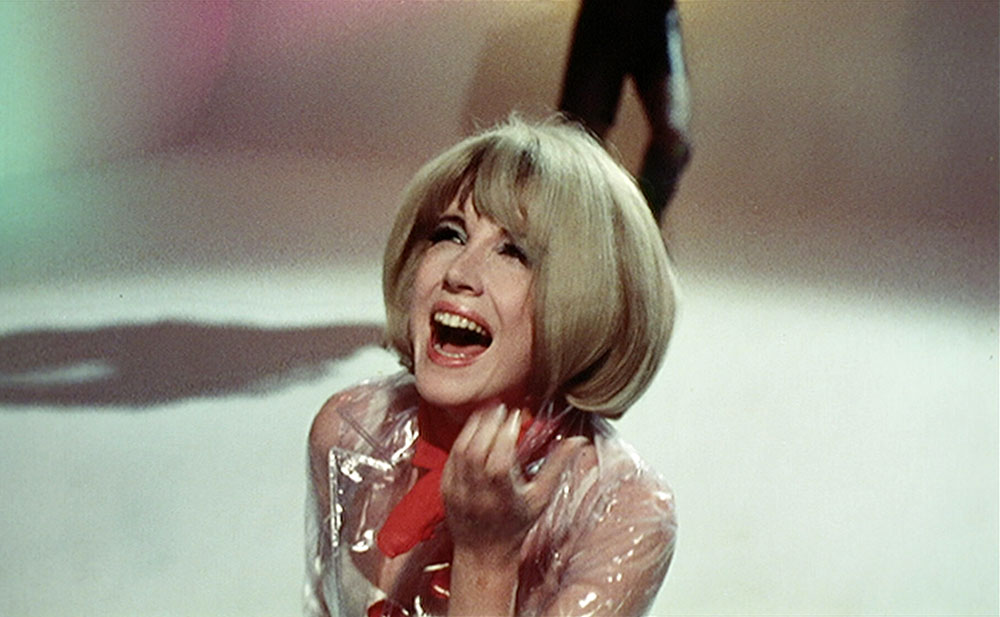
Ogier’s affinity for iconoclasts led to roles in Luis Buñuel’s Discreet Charm of the Bourgeoisie (1972), and several collaborations with nouvelle romancière Marguerite Duras. From within Duras’ arid, withholding structures—as in the brief, oneiric catharsis of Le Naivre Night (1979)—Ogier showcases the statuesque restraint at the foundation of her practice. A trio of her collaborations with Schroeder predate his Hollywood success streak: Cheaters (1984) finds Ogier playing bad luck on the arm of a degenerate gambler played by Jacques Dutronc; in the X-rated Maitresse (1975), she is a dominatrix to the young towheaded Gérard Depardieu. Perhaps of greatest amusement though is the ambivalent neocolonial walkabout La vallée (1972), in which diplomat’s wife Ogier seeks heady enlightenment among an uncontacted tribe in Papua New Guinea, to a soundtrack by Dark Side-era Pink Floyd.
The most consummate synthesis of the political and aesthetic dimensions of her craft outside of her work with Rivette, however, may be Rainer Werner Fassbinder’s The Third Generation (1979). As part of a Baader-Meinhof-style cell in West Berlin whose discipline has gone slack underground, Ogier helps to keep the organization alive while absorbing the domestic backlash of the revolution’s faltering sexual front. Her physiological artistry thrives under the guidance of a director at the height of his powers, with all its attendant contradictions: curling against a darkened wall during a clandestine operation; attending primly to the dinner table where her rapist holds court.
A turn as a Circe-figure in the shaggy Robert Frank-Rudy Wurlitzer road movie Candy Mountain (1987) typifies Ogier’s mirrored art-life among refugees and vagabonds in the ‘80s. As co-writer, she conceived of the claustrophobic ex-con in Le pont du nord (1981) as a workaround for the funds Rivette lacked to shoot indoors. She would co-star in that film with her daughter Pascale, whose tragic death three years later cut short a career of unlimited potential. By the end of the decade, in Gang of Four (1989), Rivette saw fit to give the role of a mysterious, demanding theater director, broken by fortune, exiled from the world—a cipher, almost unquestionably, for himself—to his most trusted star.
Ogier’s roles in later days often came with the lighthearted self-referentiality reserved for institutions of the European screen. Her role opposite Michel Piccoli in Manoel de Oliveira’s Belle toujours (2006) both compounds and overwrites the Buñuel reference, casting her opposite her former Discreet co-star as a sight match for (the presumably unavailable) Catherine Deneuve. Her interlude in Olivier Assayas’s Irma Vep (1996) points unmistakably to the film’s shaggy Rivettian structure—along with a director played by Jean-Pierre Leaud whose fragile vision proposes a hybrid of Rivette and Issou. At age 84, Ogier is perhaps finally content to enjoy the freedom that her life’s work has so restlessly pursued.
Bulle Ogier: A Tribute runs May 1-May 31 at the Museum of Modern Art.
